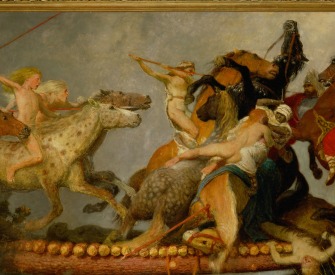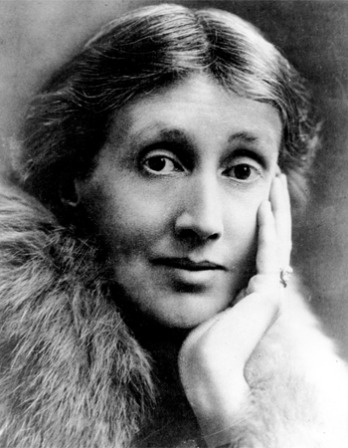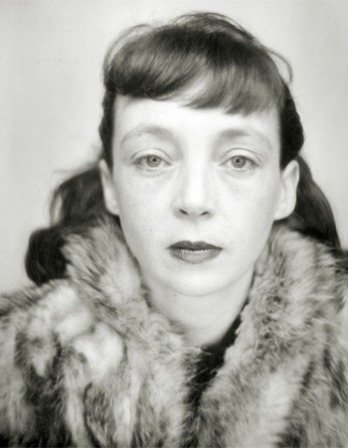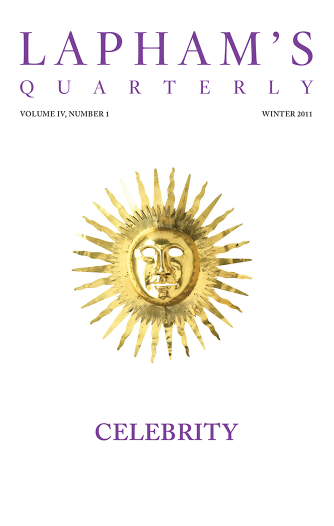A riot is at bottom the language of the unheard.
—Martin Luther King Jr., 1967The Great Rift
Jeffrey Gettleman on the 2007 Kenyan election crisis, and why in Kenya all politics is tribal.
By Jeffrey Gettleman

Former Kenyan President and winner of the disputed 2007 election Mwai Kibaki at the London Conference on Somalia, 2012. Foreign and Commonwealth Office.
In the span of about a week, starting on December 30, 2007, the day that President Mwai Kibaki stood awkwardly in an ill-fitting suit in the backyard of the Nairobi statehouse, Bible in hand, and had himself sworn in after a rigged election, Kenya went from one of the most orderly countries in sub-Saharan Africa to a war zone. The violence was as terrible as it was swift, but the real shock was that it could happen here at all. Kenya had just held two back-to-back national elections, in 2002 and 2005, that were widely praised as free and fair. According to pre-election polls, most Kenyans were backing the opposition candidate, Raila Odinga, and they were expecting a peaceful transfer of power, which has happened only a few times in Africa, but Kenya was thought to be the happy exception, and for good reason.
Having been stationed for the New York Times in Kenya for more than six years, and having reported on Kenya’s amazing distance runners, its second-to-none safari business, and its golf-club-wielding middle class, I watched this country prosper as many other countries in Africa remained stagnant or, worse, imploded further. Kenya was different. It was the anti-Congo, the anti-Burundi, the anti-Sudan, the opposite of African nations where violence rules and the infrastructure is sinking back into the weeds. I used to get back from those countries, places where I feared for my life all the time, and want to kiss the tarmac at Nairobi’s airport. In Kenya, things work. There’s an orderliness here inherited from the British, manifest in the cul-de-sacs with marked street signs in neat black lettering and the SUVs driven by the wildlife rangers somehow without a speck of dirt on them. There are Internet startups, investment banks, a thriving national airline. It is still Africa, and most people are still poor, but even that has been changing. In the mid-2000s, the economy was growing by about 6 percent per year, far faster than those of Western Europe or the U.S., adding hundreds of thousands of new jobs. Kenya’s middle class—around four million people making between three thousand and forty thousand dollars per year—is one of the continent’s largest.
Which is all to say that when Kibaki’s men openly hijacked the vote-counting process and forcibly installed their man, I, along with most Kenyans, was astounded and then quickly appalled. Within minutes of Kibaki taking the oath of office that day, thousands of protesters burst out of Kibera, an enormous shantytown, waving sticks, smashing shacks, burning tires, and hurling stones. Police poured into the streets to control them. In the next few days, gangs went from house to house across the country, dragging out people of certain tribes and clubbing them to death. It was horrifyingly clear what was starting to happen—tribal war—and that promising GDP or literacy-rate statistics were no longer relevant.
By January 2, 2008, I was looking down from the cockpit of a helicopter flying over the Kenyan stretch of the Great Rift Valley, a four-thousand-mile-long fracture in the earth’s surface, searching for a church where several dozen people had just been burned to death by a mob. The pilot, Chief, was a big, good-looking Kenyan with all the confidence and command presence you’d expect of a guy named Chief. We were cruising at about five hundred feet, and he pointed out, with a grimace, the stripes of destruction down below—one farm smashed and smoking, the farm next door untouched. There seemed to be a pattern there, but I couldn’t figure it out; Chief was too busy working the cyclic stick and throttle to elaborate. Steel guardrails had been twisted across the highways and enormous trees slung across the roads, blockades that would have taken serious organization and manpower.
Chief eventually found the burned church, picked a nearby cornfield, and put us down nicely. The moment I stepped out of the chopper I was hit by the acrid whiff of char, which meant that the wind was carrying into my lungs bits of burned grass, wood, maybe even bone. The church was still standing, but just barely, its mud walls blackened and roof gone. A few men quietly dug through the rubble, scavenging for anything they could haul away, a singed mattress or bicycle with the paint cooked off. The bodies had already been removed.
There was a scruffy little man sitting blank-eyed on the ground, twirling a blade of sharp-edged elephant grass between his fingers. Habari yako, ndugu yangu? How are you, my brother? Mzuri, he mumbled reflexively, Fine, the invariable Swahili response, even when clearly not appropriate. I put a hand on his back and felt a sharp shoulder blade through the fabric: this man hadn’t eaten in days. His name was Daniel, and he was bricklayer and a Kikuyu, the same ethnic group as President Kibaki. When it became clear to the Kenyan populace that Kibaki had stolen the election, the other big tribe in this part of the Rift Valley, the Kalenjin, supporters of the opposition party, rampaged across hillsides looking for Kikuyus to kill, several dozen of whom had gathered in the church, hoping for safety in numbers. Eight hundred Kalenjin showed up. Daniel and some of the other men ran away, outnumbered and thinking the Kalenjins were after only them, the men, spoiling for a fight. But the mob wasn’t sparing anybody that day. The youths stuffed mattresses in front of the church doors, let out some war whoops, and then lit the building on fire. Women and children clawed at the mud-and-stick windows, trying to get out. The church went from being a refuge to an oven, and then a mass grave.
Kenya was a country with a functioning government, I thought to myself, and stammered out loud: Why didn’t anyone run to the district officer’s place for help? Didn’t the cell phones work? Where the hell were the police?
Police? Daniel laughed a bitter little laugh. There are no police anymore.
A few days later, I stood along a road in the Rift Valley and watched busloads of Luo families heading west, to their ethnic stronghold, and busloads of Kikuyu families heading east, to their place. Sometimes the buses would slide right past each other and the little Kikuyu and Luo kids sitting atop piles of clothing and jerrycans would stare out the windows at each other, as their country tore along ethnic seams.
At least there was still Nairobi, home to those Internet startups and investment banks housed in gleaming skyscrapers. But when I returned home, corpses with crushed skulls were sprawled in the street not far from the leafy reaches where I live. In the middle of January, I went with my wife, who was shooting videos of the mayhem, to meet a Kenyan photographer named Boniface Mwangi, who had been introduced to us as an expert on the slums. With him we descended into Mathare, a portal into the ills of rapid urbanization, a huge slum with several hundred thousand people—no one knows for sure—living in iron-sided shanties built on a hillside leading down to the edge of a stinking, rat-infested river. A few minutes into Mathare, Boniface found what we were looking for: a fresh corpse, a young man face down in the garbage. There was a white plastic bag over his head, an attempt, I think, by some slum dweller to lend this man some dignity. Work fast, Boniface whispered. They may come back. I couldn’t believe what was happening: things had gotten so bad in Nairobi, the capital, that nobody was even collecting bodies? We stayed for about three minutes. As we climbed back up out of the slum and emerged onto the street, a woman was screaming for police officers to come down to her home. They are killing, killing, she said. But a pair of officers standing by, armed with AK-47s, didn’t budge.
The election was the first time in Kenya’s history that tribal politics was dragged into the open and the first time that there was a hotly competitive race between a Kikuyu (Kibaki) and a non-Kikuyu (Odinga, a Luo). There are about forty different ethnic groups or tribes in the country, each with its own language and customs, and the stolen election ignited long-simmering ethnic grievances that many Kenyans had thought, or maybe more aptly, had wished were redressed. In all, at least one thousand people were murdered and about one million displaced. The police, the judiciary, the army, the religious leaders, and especially the politicians all failed their country at the moment when they were needed most.
Christ Presented to the People, by Quentin Massys, c. 1515. Prado Museum, Madrid. 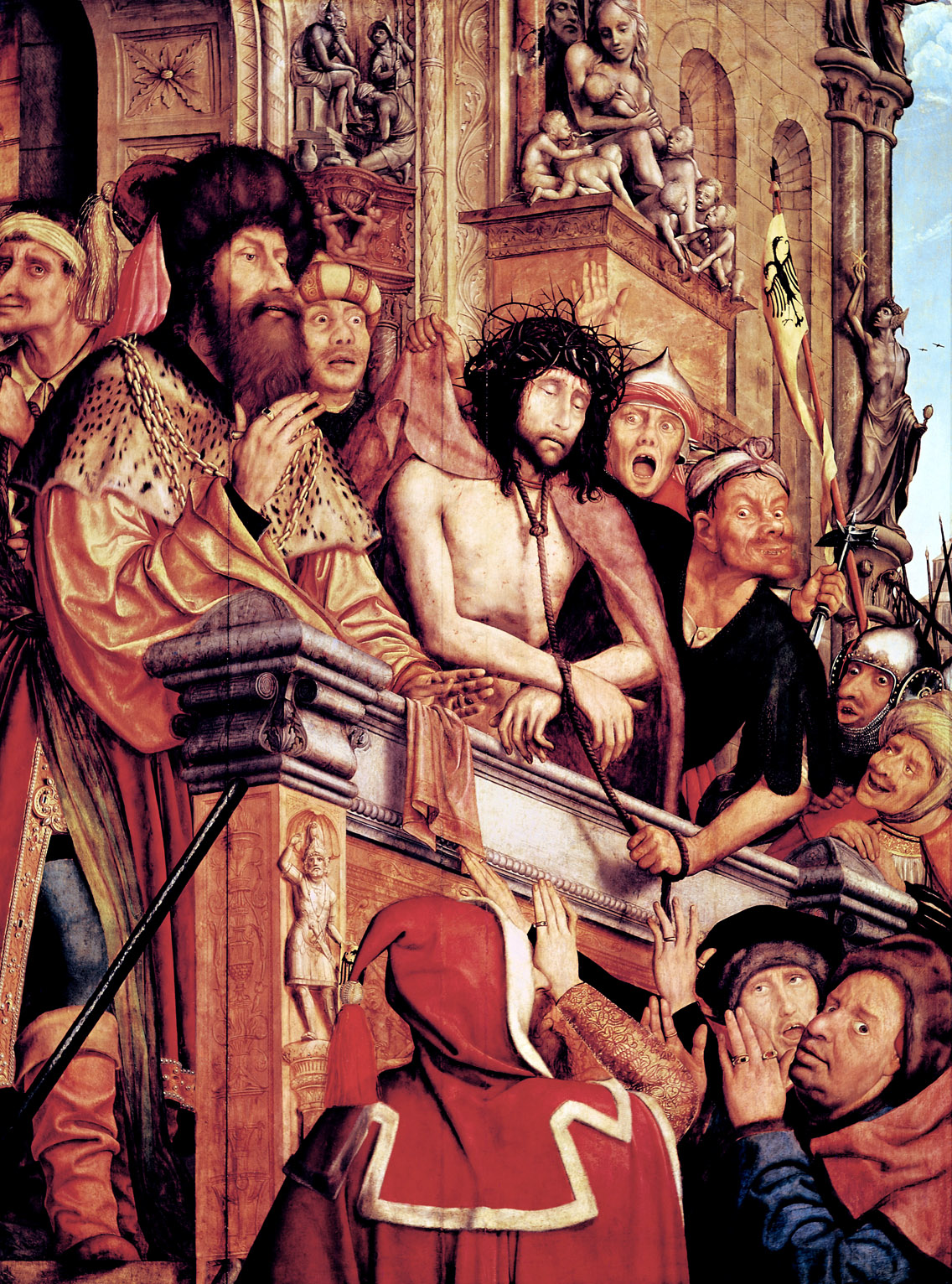
In much of Africa, if not the world, geography and ethnicity correlate, certain groups dominating certain areas. This was the basis of South Africa’s apartheid-era homeland policy, which sought to relegate every black person in the country to an ethnic homeland. In Kenya, single ethnic groups often overwhelmingly populate a place, like the Luos on the shores of Lake Victoria or the Kikuyus in the foothills around Mt. Kenya. Not so in the Rift Valley. Here Luos, Kikuyus, Kambas, Kipsigis, Nandes, Ogieks (the traditional hunters and gatherers), Luhyas, Masais, and Kisiis are all packed together, drawn by fertile soil and the opportunity for work, making the towns and the countryside cosmopolitan. The multiethnic Rift Valley was the epicenter of the violence, and death squads swept the hills with elemental killing tools—knives, rocks, and fire—singling out families to execute (the stripes of destruction I saw from the helicopter).
Kenya’s portion of the Great Rift Valley seems to belong to another world and another time—lakes so full of flamingoes that the water is actually pink when you scoop it up in your hands, sculpted green mountains nosing the sky, and soils so rich that just about any fruit or vegetable known to man can grow, from mangoes to guava to snow peas to cucumbers to miles and miles of high-quality, disease-resistant corn. Kenya’s natural beauty, so undeniable in the Rift Valley, sent it down a path different from other European colonies: few African areas attracted so many white settlers. South Africa, yes, and Rhodesia (now Zimbabwe) too, but they were qualitatively different, agricultural and mineral-based economies, with legions of working-class whites. Kenya, on the other hand, because of its wildlife and spectacular landscape, became a playground for aristocratic misfits. They came to shoot lions, drink gin, maybe try their hand at gentleman farming, and cheat on their wives. There was a famous expression from colonial-era Kenya: “Are you married, or do you live in Kenya?’’
By World War I, the British had established huge farms and built a railroad—nicknamed the Lunatic Express—connecting the Indian Ocean coast to Lake Victoria. To fill the ranks of their growing colony and because there weren’t so many working-class whites around, the Brits shamelessly typecast the Kenyans: the Somalis were the soldiers, the Kikuyus the farmhands, the Luos the teachers, the Kambas the bureaucrats. In few African countries was ethnicity so energetically used to categorize people as it was in Kenya. This was the beginning of serious problems. After World War II, Kenya joined the chorus of colonies across the world chaffing for self-rule. But the British, having given up India in 1947, were especially vicious here. When the Mau Mau Rebellion broke out in 1952, led by Kikuyus fighting for their independence, the British rounded up and killed tens of thousands of Kenyans, castrating some of those they decided to spare. London eventually relented, and Kenya was granted independence in 1963, a constitutional parliamentary government in place, with clear British influences.
The country’s first president, Jomo Kenyatta, a well-educated nationalist figure who had been sentenced to seven years of hard labor during the Mau Mau, further entrenched the tribal lines that had been emphasized during colonial rule. He began the winner-takes-all policies of sucking up the resources of the state for his own tribe, in this case, the Kikuyu. He seized the most productive land in the Rift Valley, evicting the Masai and the Kalenjin and the Ogiek. He shunned talented Kenyans who weren’t Kikuyu, like Barack Obama’s father, a Harvard-trained economist and one of the best-educated men in Kenya at the time, but a Luo. Kenya’s next two presidents, Daniel arap Moi, a Kalenjin, and Kibaki, a Kikuyu, did not change the basic calculus of discrimination, enriching themselves and their tribesmen at the expense of millions of poor Kenyans who toiled in the fields, bellies full of worms, their children small and sick.
When there’s ethnic tension, it’s usually not just a question of difference. It’s a question of power. In Rwanda, Burundi, Ethiopia, Liberia, Sudan, and many other parts of Africa, this combination—a heightened sense of ethnic identity and serious inequality—has exploded into civil wars. As John Githongo, one of Kenya’s most respected intellectuals and a former government official who quit in 2005 because of the corruption, put it, “When you have systemic corruption, conspicuous consumption, and stark inequalities and you ethnicize all those inequalities,’’ that, he said, is “absolutely toxic.’’ Another problem in Kenya is that the founders did a decent job of building a state but failed at building a nation. There was bureaucracy and tidy streets, but little sense of Kenyanness. This is true in other African countries cut up on the colonial carving board, but even Congo’s kooky kleptocratic dictator, Mobutu Sese Seko, knew to implement specific policies to fuse together a fledgling, heterogeneous country. He changed the name of Congo, what the Belgians had called it, to Zaire. He outlawed neckties and urged his people to drop their Christian names for something more Zairean. Tanzania’s first president, Julius Nyerere, known as “the Teacher,’’ pushed the speaking of Swahili and discouraged use of smaller tribal languages, which in neighboring Kenya continue to be spoken widely today.
A riot is at bottom the language of the unheard.
—Martin Luther King Jr., 1967During Kenya’s election violence, it felt like madness but there was a method to it. People might have ignored the laws, but they followed rules. There was opportunistic burning and looting—I saw it myself—but in the Rift Valley, where the bulk of the corpses rotting in the morgues had white tape affixed to their foreheads that said post-election violence, the killing followed a plan. The death squads didn’t bust into a town and start slicing up the first people in sight. Instead, rowdy youths set up roadblocks, pulled people off buses, and demanded to see ID cards, last names spelling salvation or death.
I interviewed one young man named Rono Kibet, who told me that after the president was preemptively sworn in, the Kalenjin elders gathered hundreds of young men from his village and held a warrior ceremony. The elders blessed the young men with holy oil and then told them to sweep out the Kikuyus. Rono told me how he had raided several Kikuyu encampments and shot people in the chest with poison arrows. He spoke on the record and let us photograph him, supremely confident he would not be arrested. He never was.
Many Kenyans still feel more allegiance to an ethnic group, with hundreds of years of history, than to the amorphous state. And why shouldn’t they, if the supposedly sound superstructure of the government simply perpetuates inequalities?
Max Weber defined a state as a monopoly on violence—if you don’t follow the law, you will be crushed. But in sub-Saharan Africa, most states are weak and not so good at crushing. More of Africa has spun out of government control—the deserts of Mali, the jungles of Congo, the vast savannahs of South Sudan—than anywhere else in the world. Another theory about nation-states, advanced by Paul Collier, an Oxford economist, is that it took international war to solidify the bond people have to their countries. Europe’s emerging nations in the sixteenth and seventeenth centuries levied taxes to fund their militaries, and the Dutch, Collier says, were the first to discover that people tolerate high taxation only if government is accountable to the public, creating a form of codependence. This never really evolved in Africa, as Collier points out, because dictators tend to keep taxes low to head off the chance of widespread revolt. Also, there have been few cases of African states going to war against each other. When the Organization of African Unity was founded in 1963, one of its guiding principles was not to tinker with colonial-era borders—such tinkering would be endless, and most likely violent. Most wars in Africa are civil wars.
Still, there were always governing forces, and effective ones, like village-level chiefs who presided over marital disputes or tribal chiefs who covered a wider range of turf, reconciling with the elders of other communities when intracommunity violence broke out. And there were traditions. Young men subjected themselves to certain time-honored and often very painful rituals (circumcision at age fifteen) to become warriors to defend the tribe. They still do. Female genital mutilation is technically illegal and punishable by jail, but thousands of women still cut their girls every year because the law of tradition is stronger than any so-called law of the land. So even in times of peace, you can feel a tension between the old order and the new—the deep, distant rumble of social forces scraping against each other like tectonic plates. Occasionally, there’s going to be an earthquake.
And what does the state actually deliver? The state protects people, usually. In recent years, primary education, for instance, has become free in some countries on the continent. But African governments are not great at delivering basic services. International charities, like Save the Children and Doctors Without Borders, often are the ones left to feed the poor or help them get life-saving medicine, even in a semideveloped African country like Kenya. Unless the government takes specific steps to overcome tribal differences, which the Kenyan government hasn’t really done, then the country, outside the handful of cities, will tend toward ethnic segregation. And even in Nairobi, tribal languages are often a problem in the workplace, because many people feel more comfortable speaking them than English or Swahili. That can alienate coworkers from other tribes who sit in the next cubicle. People still mostly vote along ethnic lines. It doesn’t matter the politician’s record: if he’s from your group, he’s your man. Part of this is pragmatic, because odds are you will benefit more if someone from your tribe reaches high office.
As time goes on, economies mature and institutions get stronger, people’s loyalties will shift from their ancestors and traditions to other bases of identity. People will identify more with being a doctor, say, than being a Masai. So goes the logic of nation building. But when warlords take over Somalia in 1991 or when the government essentially steals an election in Kenya in 2007, it’s not so easy to subscribe to that line of reasoning.
If Western-style state institutions failed Kenya during the election crisis, it was, in the end, Western-style capitalism that came to the rescue. Kenya’s middle class—and its donor nations—pulled the country back from the brink. They had a lot to lose, having shrewdly built this economy and then started to see the hard work and investment reduced to char blowing in the wind. It started with breakfast meetings in a windowless, wood-paneled conference room in the Serena Hotel in downtown Nairobi, where doctors, lawyers, wildlife gurus, executives, and professors began their sessions by standing up, holding hands, and singing the national anthem. Natukae kwa undugu… May we dwell in unity…
In that room I met George Mbugua, the CFO of a growing water-supply company in his forties, who had two cars, a closet full of suits, a new set of golf clubs, and a hankering to go deer hunting in Alaska. He was the embodiment of the new Kenya. He told me nobody was untouched by the violence and that even in his Nairobi neighborhood of five-bedroom McMansions, people were moving out—non-Kikuyu people—because they didn’t feel comfortable.
While violence raged in the streets, Mbugua’s group held discreet meetings with politicians, urging President Kibaki’s men and the opposition to compromise. There wasn’t going to be a new election, that much was clear. But the hope was to form a power-sharing government—later named “the grand coalition government”—that would give Odinga and other leaders top positions and real power. Kibaki refused for several weeks until Condoleezza Rice flew into Kenya, wagged her finger at him, and warned that America would not tolerate any more dallying. It was time to cut a deal. The U.S. is Kenya’s biggest donor, pumping in around $1 billion of aid every year, and Kibaki had no choice but to relent. That was in February 2008. Odinga became the prime minister. A few days afterward, he told me, “Better half a loaf than no bread.’’
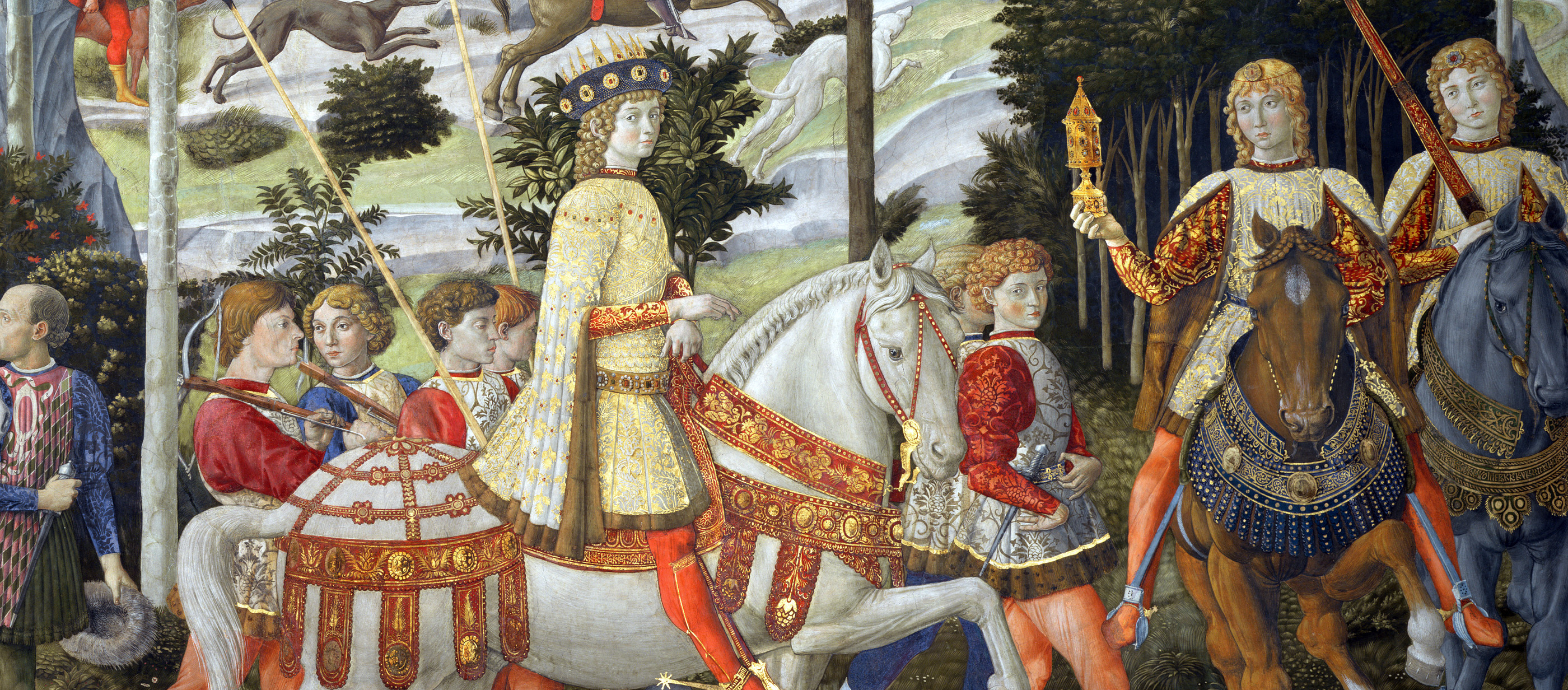
Lorenzo the Magnificent, detail from Procession of the Magi, by Benozzo Gozzoli, c. 1459. Palazzo Medici-Riccardi, Florence.
The next presidential election is in March 2013—the year of the country’s fiftieth anniversary of independence—and it’s cause for a strange brew of anxiety and hope. Kibaki can’t run again, because of term limits, but Odinga is a candidate and considered a top contender. He’s made many enemies, though, especially among Kikuyus and Kalenjins, who have criticized his support for the International Criminal Court, which is now prosecuting several alleged ringleaders of the postelection violence, stepping in only because Kenya’s courts have refused to do just about anything. One of those thought to be most responsible for the Kikuyu counterattack is Uhuru Kenyatta, a deputy prime minister, son of the first president and one of Africa’s richest men, thanks to the founding father’s sticky fingers. The ICC has accused Uhuru of arming a notorious Kikuyu street gang and unleashing them on Odinga’s supporters. Uhuru, whose name means freedom, is supposed to stand trial in April; he is running for president in March. Not an auspicious scenario should he win, and he might.
The last election demonstrated that if enough people inflamed by ethnic grievances switch their allegiance from the state to something deeper and older—and it doesn’t have to be even close to most people, because the vast majority of Kenyans stayed on the sidelines in 2007 and 2008—then the state can’t stop them. Why didn’t the police protect that church or respond to the crying woman in Mathare? Because maybe they, too, were split by the same divisions and weren’t about to fire on their brothers. Or maybe there were not enough of them, which might be the case anywhere in the world, if neighbors turn on neighbors.
During the height of the violence, one Kikuyu man who lived near the burned church told me how the night after the election, a mob formed at his door. When his wife and children started to panic, he told his family, Don’t worry, I know these guys. I’ll go talk to them. So he went outside and said to the Kalenjin youth standing on his dirt doorstep: Hey, what’s going on? We’ve been friends for years. But the Kalenjin mob just stared coldly back and said today is today. You are no longer our friend. Then they burned everything he owned.
When, in about six months, millions of Kenyans line up once again in schools, churches, and community centers, from the coiffed suburbs of Nairobi to thatched-roofed villages, there will be even more to lose, should history repeat. Business is booming, now more than ever. The Chinese have come in here strong, drilling for oil and building new highways and overpasses, which Kenyans drive on warily, peering down, taking in the new marvel. There are new malls and new shops, like Planet Yogurt, where Kenyans are lining up to buy five-dollar cups of frozen yogurt. And the “grand coalition government,” though hardly grand, has at least survived, albeit strained by many minor skirmishes over judicial appointments or even who sits where at a ribbon cutting.
Election fever has begun early, and nearly every day there’s a banner headline in the Daily Nation, Kenya’s biggest paper, about who’s conniving against whom and what the latest polls say about Raila versus Uhuru and so on. There’s also mounting concerns whether all the new computers bought by the revamped election commission and the new voter-ID systems will actually work.
A taxi driver told me the other day how he just got a Facebook account. He seemed eager for conversation. So I asked him, What do you think? Will the next election be ugly?
No one wants to go back to that, he said, eyeing the crowded Nairobi streets. We’ve learned our lesson.

